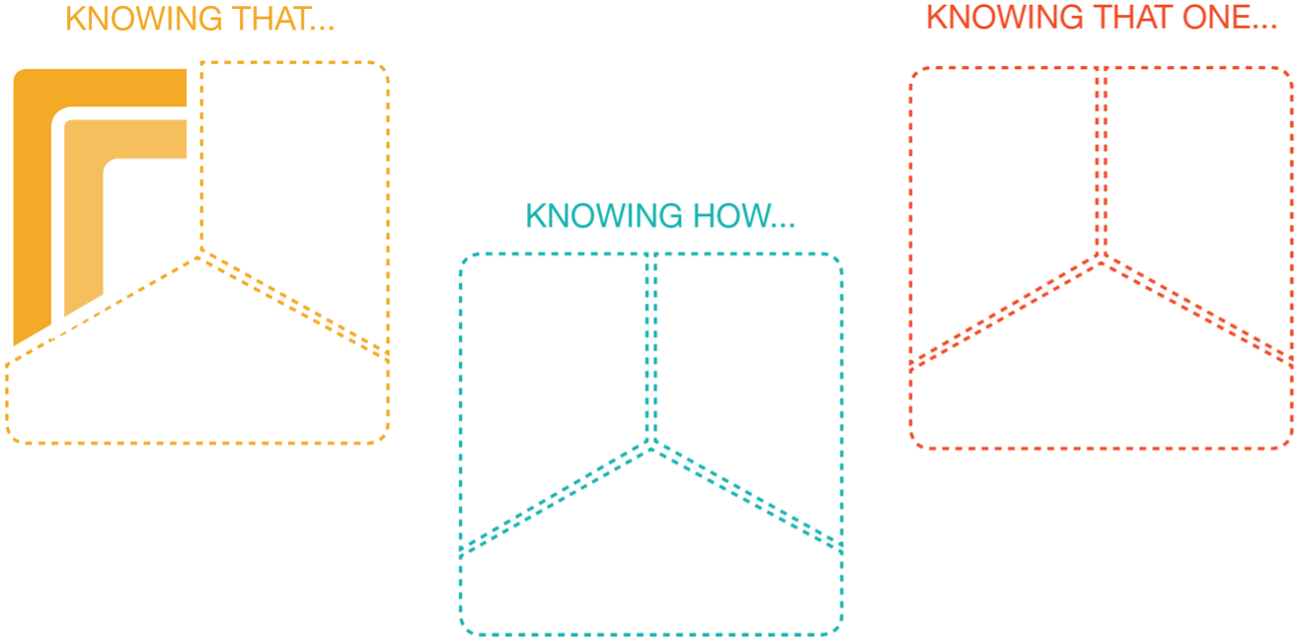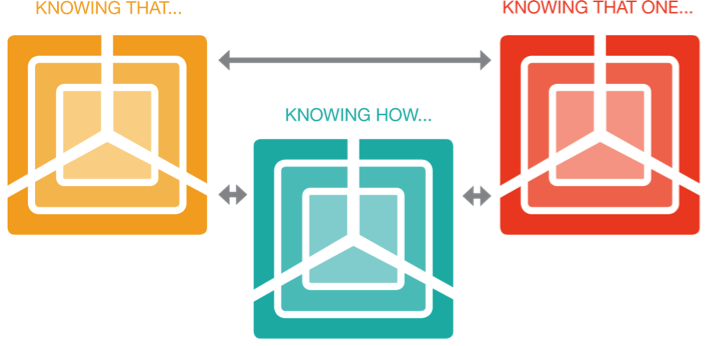Weakly Integrated Knowing
Figure 5 below illustrates a weak mental structure. Notice that 'knowing how' and 'knowing that one' are disconnected from 'knowing that'. Components are mostly missing and disconnected with respect to a given object of knowing (e.g., a dog).

Figure 5. Illustration of weakly connected knowing.
Unshaded areas with dashed borders indicate those components are missing. Moreover, the three basic kinds of knowing are disconnected, represented by lack of gray arrows.
Note that 18 components of ‘knowing how’ and ‘knowing that one’ are missing, disconnected from each other and from ‘knowing that’. Furthermore, within ‘knowing that’, 6 components of student intention and emotion are missing from this mental structure (with respect to an object of knowing), which are represented by unshaded areas with dashed borders. The only two present and connected components in the figure above are instantial and relational ‘knowing that’ with respect to an object of knowing (e.g., a dog). Criterial ‘knowing that’ is absent and hence disconnected. This kind of ungrounded and dissociated learning can occur when signs used in communication are used in isolation from their corresponding real-world objects and purposeful activity. The resulting mental structures are weakly connected, lacking wholeness and integration.
Compare with wholly integrated knowing, illustrated in Figure 6 below:

Figure 6. Illustration of wholly integrated knowing.
For more, see totally integrated education.
